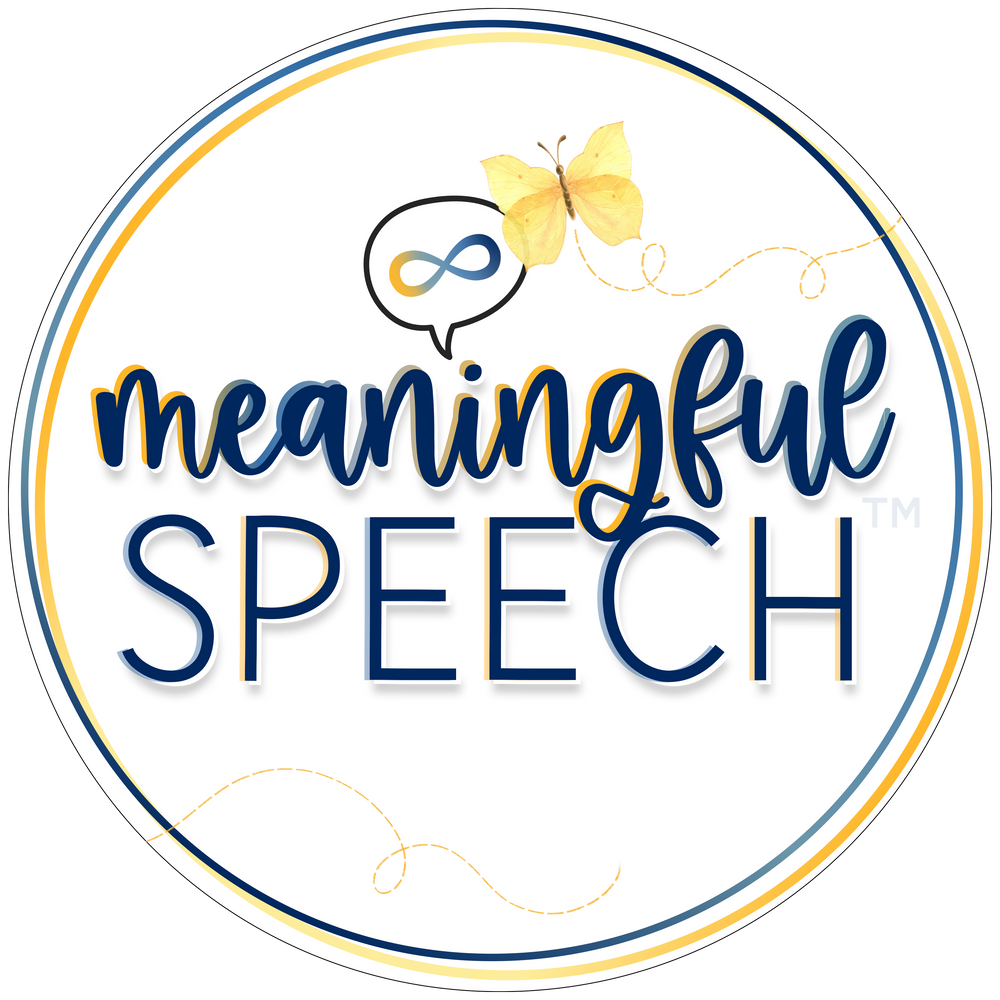Immediate vs. Delayed Echolalia
Feb 22, 2023
There are two kinds of echolalia, immediate and delayed. Delayed echolalia is a part of gestalt language development, whereas immediate echolalia is not. Both kinds of echolalia are meaningful and serve different functions. Even though immediate echolalia is not a part of gestalt language development, many gestalt language processors often use immediate echolalia. It’s important to understand the various purposes of immediate echolalia to understand the possible “why” behind it.
Immediate Echolalia
Immediate echolalia refers to utterances that are produced or echoed immediately after they’re heard. They might echo the whole phrase, or part of the phrase. Immediate echolalia has a variety of purposes. It may be used to…
- Process the language
- Indicate that they’re not developmentally ready for the question
- Think about the language used
- Take a turn in the conversation
- May be a sign of dysregulation
- Commit the language to memory
Example 1 (part of phrase):
Adult: “Do you want some juice?
Child: “Want some juice?
Example 2 (whole phrase):
Adult: “Where is she going?”
Child: “Where is she going?”
Delayed Echolalia
Delayed echolalia refers to the repetition of words or phrases heard that are echoed after the fact. This could be minutes, hours, days, months or weeks later. Delayed echolalia also serves a variety of purposes.
- Meaningful gestalt tied to an emotional experience.
- Serve as self-stim (ex: vocal or sound play)
- May communicate dysregulation
- It’s the first stage of gestalt language development
Example of a gestalt:
Adult: “Time to go to school!”
Child: “To infinity and beyond!” This is a meaningful gestalt that the child picked up to indicate they want to go.
How do we know what purpose immediate or delayed echolalia is serving?
First, it’s important to note that each individual is different. We want to do the detective work to investigate the “why” behind the echolalia. You can do this by…
- Taking language samples. We want to listen for spontaneous language. You’ll want to reduce the questioning and avoid prompting language.
- Observe and take samples in a variety of settings. If possible, take samples and observe the child throughout their daily routines and across settings. For example, taking one at home during various routines (play, dinner, etc.), or across settings such as home, school, the playground, etc.
- Work with an occupational therapist so that you can better understand the child’s sensory profile and regulation.
- If you’re a therapist, talk to parents! A child’s parents know them best. They will have a better understanding and clue into the “why” or may be able to guide you in the right direction.
What can we do about immediate and delayed echolalia?
We support language development through interaction and a positive relationship with the child. Both kinds of echolalia are meaningful. We always want to acknowledge a child’s communication, even if we’re not immediately sure of the message the child is trying to communicate, or the “why” behind it.
If your child/client is using immediate echolalia:
- Reduce your questioning. They may not be developmentally ready for your questions. Especially if they’re in the early stages of gestalt language development. Instead, focus on using declarative language, commenting and narrating throughout your day.
- Allow for silence. This will allow them more time to think about and process your language, take turns in conversation and for you to hear their true spontaneous language.
If your child is using delayed echolalia:
- Don’t attempt to eliminate or extinguish gestalts (scripts). First and foremost, gestalt language processing is natural language development. Although the meaning of a child’s scripts may not be apparent to you or others at first, they are meaningful! We want to send a message to the child that their communication is meaningful and valid to us. We want them to trust us as communication partners. Having rapport is so important when it comes to supporting a child’s language development.
- Always acknowledge scripts and accept them as communication. You can acknowledge a script in a number of ways. Whether you know the meaning or not. You can smile, nod your head, repeat the script back to them, say “yeah!”, etc. Let them know that their communication is heard, even if you’re not quite sure of the meaning yet.
- Do not take scripts literally. Most gestalts aren’t going to be literal. Instead, think past the words. Ask yourself questions to dig deeper into the meaning. Children pick up scripts due to a dramatic or emotional experience when they heard it. Gestalt language processors are drawn to high emotion and intonation. If you’re unfamiliar with their language history, ask caregivers, or those who are frequently with the child.
Want to learn more in-depth information about how to support gestalt language processors?
- There are many free podcasts, webinars and articles to get you started. A comprehensive list of resources can also be found on our website.
- Consider taking the Meaningful Speech course to learn more about how your child or client processes language, how you can help move them from echolalia to self-generated (original flexible) language, child-led therapy, and neurodiversity-affirming practices.
- Consider taking our new AAC + Gestalt Language Processing course. It will teach you how to identify, evaluate and support gestalt language processors who use AAC or who you think might benefit from AAC.
- Look for a speech-language pathologist (SLP) who "gets it" and can help you in supporting your child's language development. Check out our registry. for SLPs who understand gestalt language processing and child-led therapy.
